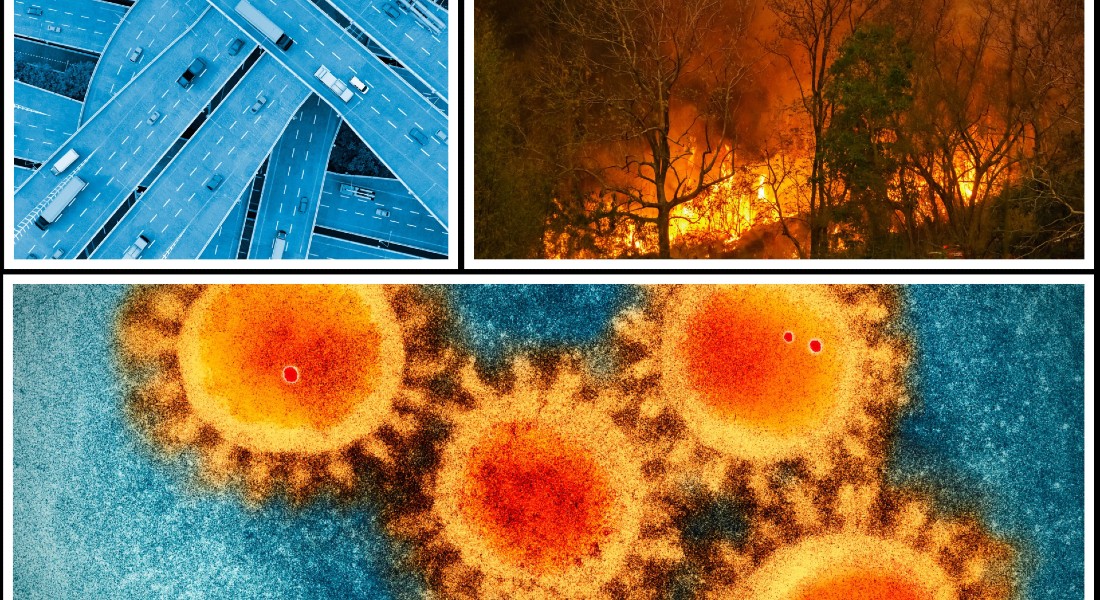Droughts, viruses and road networks: Trends that will impact our forests
A new UCPH study assembled an array of experts to highlight major trends that will impact the world's forests, and the people living around them, in the decade ahead. These trends include drought, viral outbreaks and vast infrastructure expansions across the globe. According to the researchers, a global strategy for human-nature interaction must be developed if we intend on ensuring the survival of both.

Earth’s forests are indispensable for both humans and wildlife: they absorb CO2, provide food for large parts of the world's population and are home to all sorts of animals. In a new agreement, the Danish government has set aside 888 million kroner to protect nature and biodiversity.
However, forest conservation measures are lagging in other countries, says Laura Vang Rasmussen, an assistant professor at the University of Copenhagen’s Department of Geosciences and Nature Management.
"It is critical for countries like Denmark, and especially countries with weaker economic conditions, to prioritize forests and have forest conservation plans. Without the adoption of conservation strategies, droughts and viral outbreaks could have severe consequences on forests and humans alike," she says.
Rasmussen, along with fellow researchers from the University of Manchester, is behind a new study in which 24 experts from the around the world have ranked the most significant trends that will affect the world's forests over the coming decade.
Drought and new viral outbreaks
In Denmark, we have seen an increase in the number of summers with scant rainfall, and in the rest of the world – particularly on the US West Coast – droughts have been responsible for massive and devastating forest fires. The new study argues that this trend will continue:
"When we lose forest, due to drought for example, the risk of spreading viruses like coronavirus increases. When forest fires disturb natural ecosystems, disease carrying animals such as bats or rats flee from their charred ecosystems into towns and villages. And, as we have seen with the coronavirus pandemic, viral outbreaks have enormous consequences on global health and economy," explains Rasmussen.
Humans are migrating from the countryside to cities, with more people on the way
More people wanting to move from rural areas into the cities can have both positive and negative consequences for the world's forests.
"It could be that the amount of forest increases as more and more farmers abandon their livelihoods in favour of higher wage urban jobs. This would allow forests room to grow. Conversely, we run the risk that ballooning urban populations will increase demand for marketable crops, which will result in more forests being cleared for agriculture," says Laura Vang Rasmussen.
Furthermore, the planet’s human population is projected to increase to roughly 8.5 billion by 2030. This will result in an increased demand for meat, cereals, vegetables, etc., meaning that more forests will need to be cleared to accommodate for fields and meat production farms and facilities.
25 million kilometres of new road networks worldwide
By 2050, global road networks are projected to expand by roughly 25 million kilometres. This is likely to have a positive effect on human mobility, allowing people to shuttle between cities with ease and more readily move and sell goods. However, the downside of road building is the inevitably of having to clear forestland for roadbed.
Besides having to look after forests for the sake of the environment and wildlife, forest conservation also relates to poverty, concludes Laura Vang Rasmussen:
"It is problematic that forest conservation, agriculture and poverty are seen as distinct from one another. Indeed, the three factors influence each other, as strategies to increase agricultural production can negatively impact forests. On the other hand, an increase in forested areas makes it more difficult for agriculture to produce enough food. As such, we hope that our research is able to contribute towards highlighting the complex dynamics between agricultural production, deforestation, poverty and food security.”
Topics
Related News
Contact
Laura Vang Rasmussen
Assistant Professor
Department of Geosciences and Natural Resource Management
University of Copenhagen
lr@ign.ku.dk
+1 7789872849
+45 22913832
Ida Eriksen
Journalist
Faculty of Science
University of Copenhagen
ier@science.ku.dk
+45 93516002
The process of the study:
- 136 individuals from 23 different countries submitted 98 suggestions about which trends will be dominant vis-à-vis the world's forests and global poverty over the next decade.
- University of Copenhagen researchers then established a panel of 24 experts — researchers and representatives from a host of organisations, including CIFOR, Resources for the Future, Rights and Resources Initiative and the Ford Foundation — to rank the five most important global forest trends and how human-forest interaction will play out over the next decade.
New technology helps forests too:
- Beyond the trends described above, Laura Vang Rasmussen says that new technology will allow the condition of forests to be monitored on a global scale.
"This will improve our ability to keep up with and take initiatives where most needed," she concludes.
